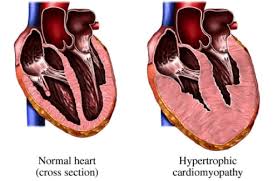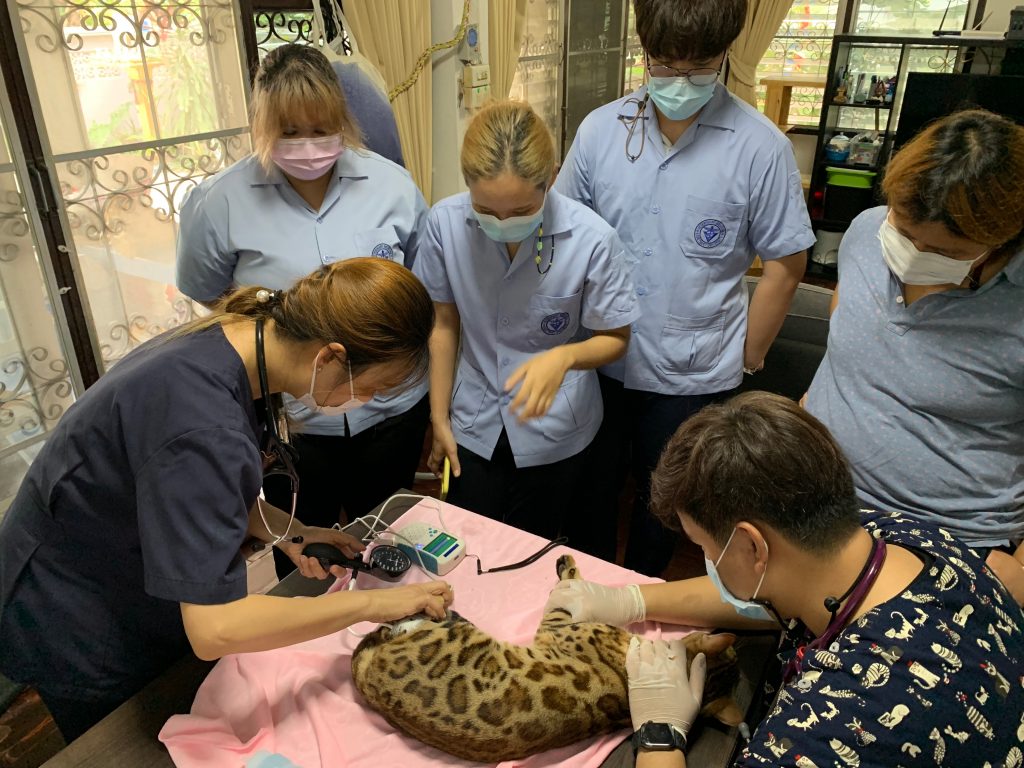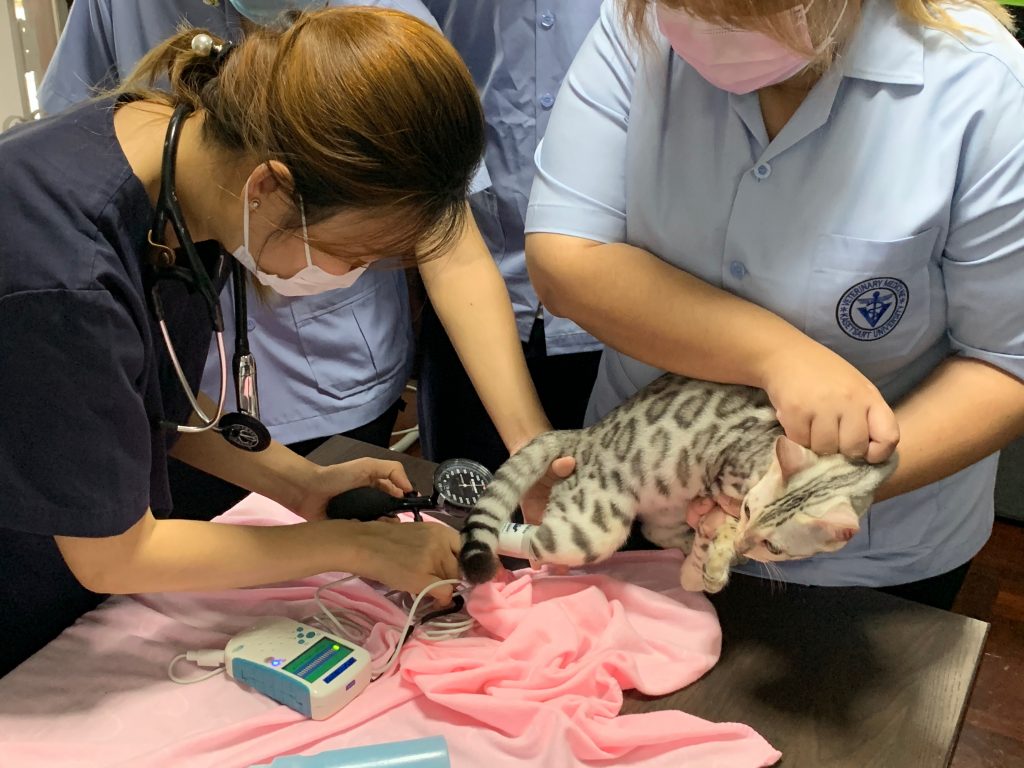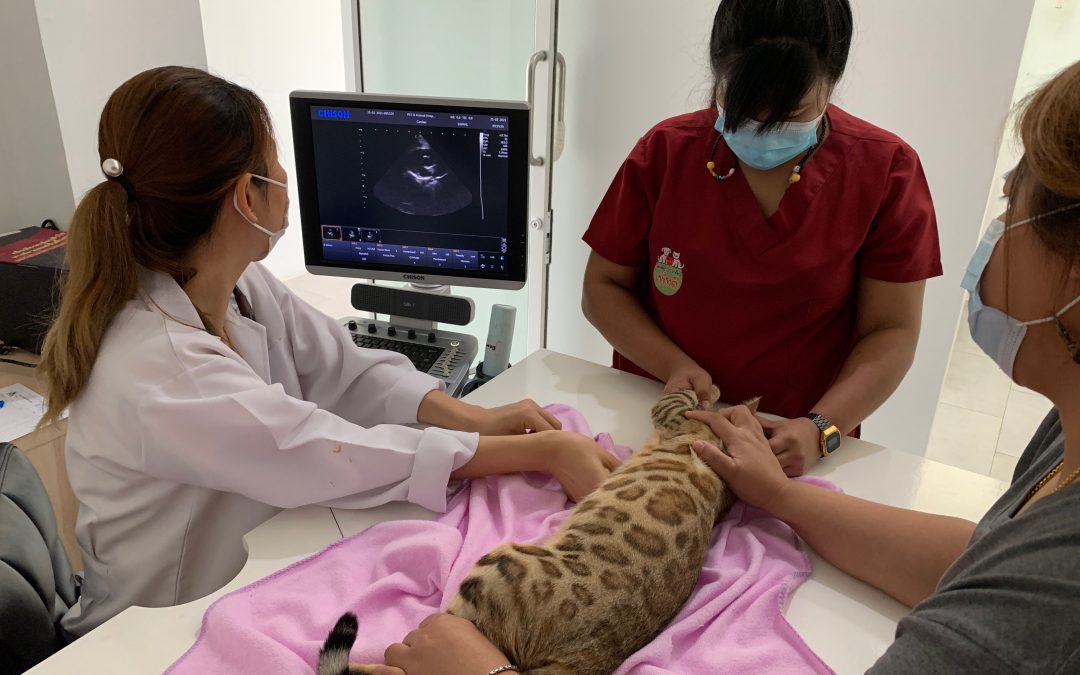We are very happy to announce that our cats are participating on a study led by Dr. Soontaree to learn more about HCM and to hopefully reduce prevalence of HCM positive cats in the future!
Dr. Soontaree and her team are conducting a study to learn more about HCM disease in cats, checking the genes encoding sarcomeric protein that have been found in a high % of HCM positive cats and then compare them with their phenotype (echocardiography) and the translational sarcomeric proteins to corroborate those percentages. The novelty in this study is that the genes that want to be checked are known to be present in many HCM positive cats, but they have not yet been demonstrated if there is any correlation between HCM affected cats and the presence of these genetic mutations.

Hypertrophic cardiomyopathy or HCM is a myocardial disease that affects left ventricle of the heart in both human and cats. The prevalence of HCM is higher in cat (14.7%) than in human (0.2%). HCM is common occurs in predisposed breeds such as Bengals, Maine coon, Ragdoll, British short hair, domestic short hair, Sphinx and Persian cats. In human, prophylactic treatment with implantable cardioverter-defibrillators (ICDs) is recommended to prevent sudden cardiac death for HCM patients. Currently, the specific underlying cause of HCM cannot be identified and pathogenesis is still unclear. HCM in human was associated with more than 11 genetic variations of gene encoding sarcomeric mutation. If sarcomeric mutation is found, it is 9.9 – 35.5 times more likely to develop heart muscle thickening. Although our understanding of diagnosis and treatment for HCM in human has developed, feline HCM still remains undiagnosed until cats presented the clinical signs.

Cats with HCM (53.5%) presented clinical signs such as respiratory distress, pulmonary edema, pleural effusion and congestive heart failure (CHF). The most common clinical signs in cats with HCM is congestive heart failure (37%). In addition, the formation of blood clot or aortic thromboembolism (ATE) in the left atrial of the heart is the most common complications in HCM cats. Appendicular artery occlusion from emboli which broken from intracardiac thrombus affect acute ischemia of limb and resulted in hindlimb paresis. On the contrary, previous study (46.4%) reported that many HCM cats are asymptomatic.
Hypertrophic cardiomyopathy in cats is challenging to diagnose, cats with HCM in early stage are most commonly asymptomatic. Therefore, detection of early stage of HCM with normal phenotype provides benefit for treatment strategies, prognosis and prevention.
Echocardiography is ante mortem gold standard for detection of HCM in cats. Measurement thickening of left ventricular free wall and interventricular septum at end diastole (ED) more than 6 mm are considered to left ventricular hypertrophy. Reduced left atrial function due to HCM can be detected from left atrium size. Moreover, Chronicity and severity also use left atrial diameter for prognosis. The ACVIM Heart Association recommends testing this HCM mutation gene prior to mating, in order to reduce the transmission of genes from cat to cat and reduce the incidence of HCM heart disease in cats.


